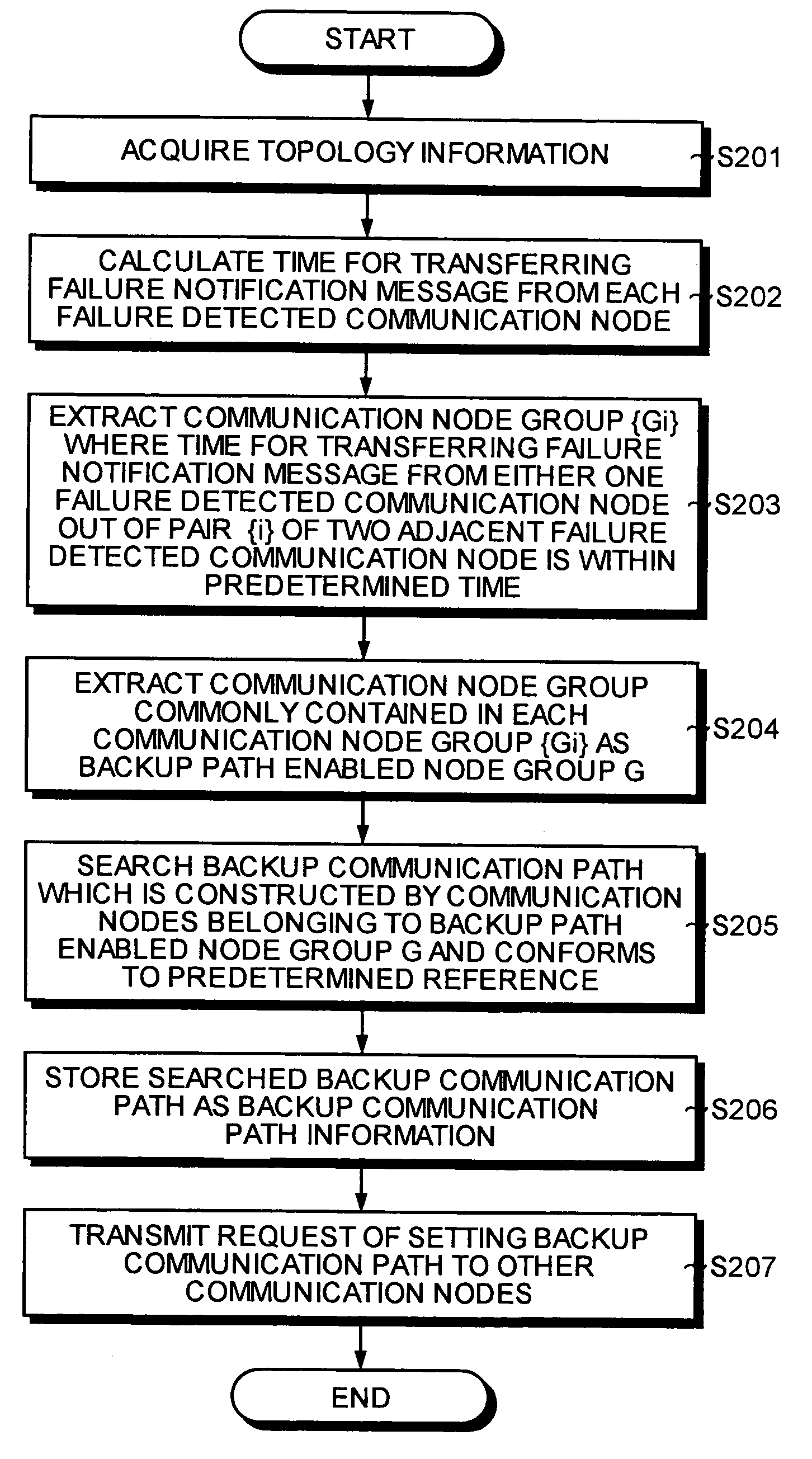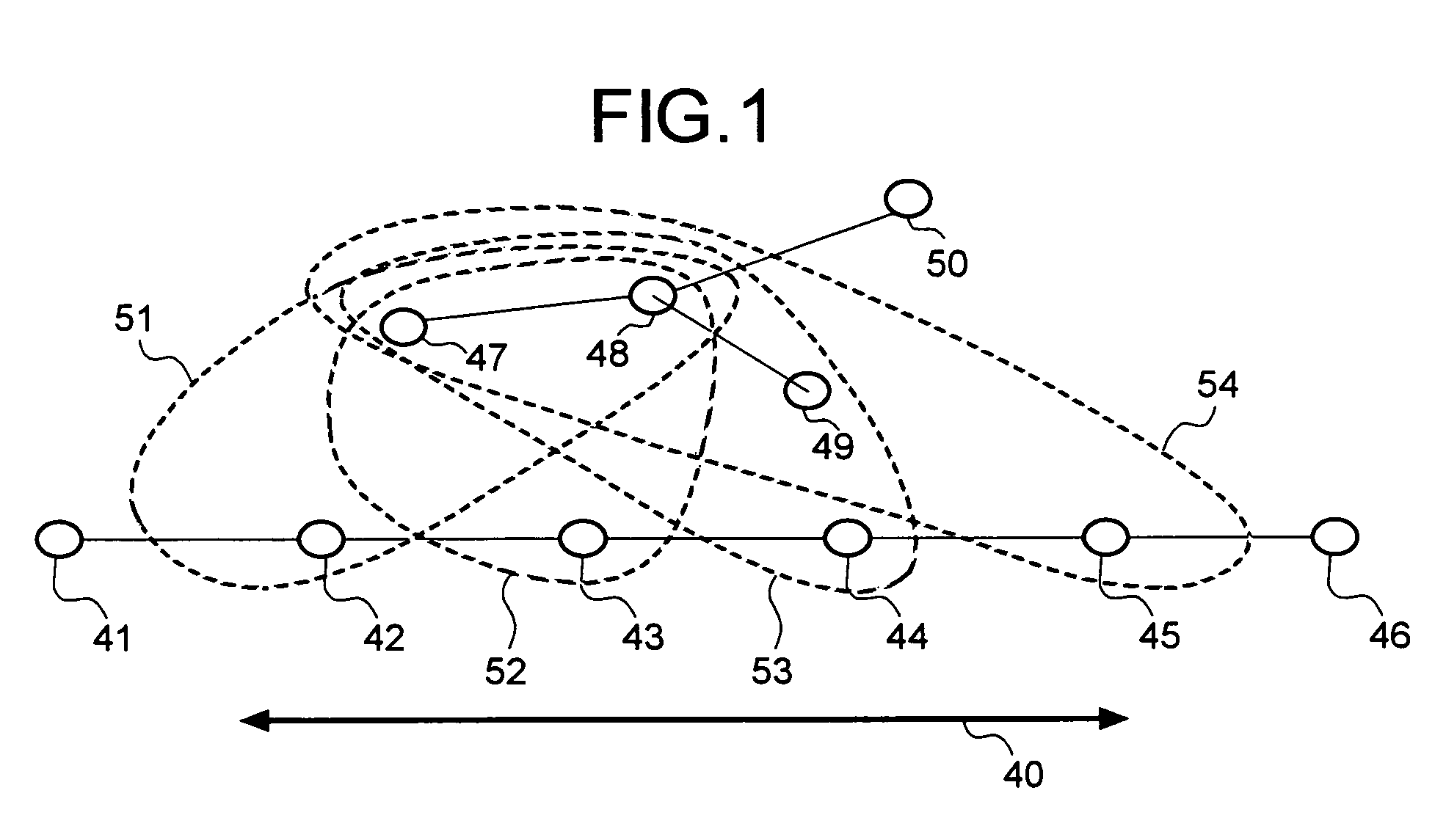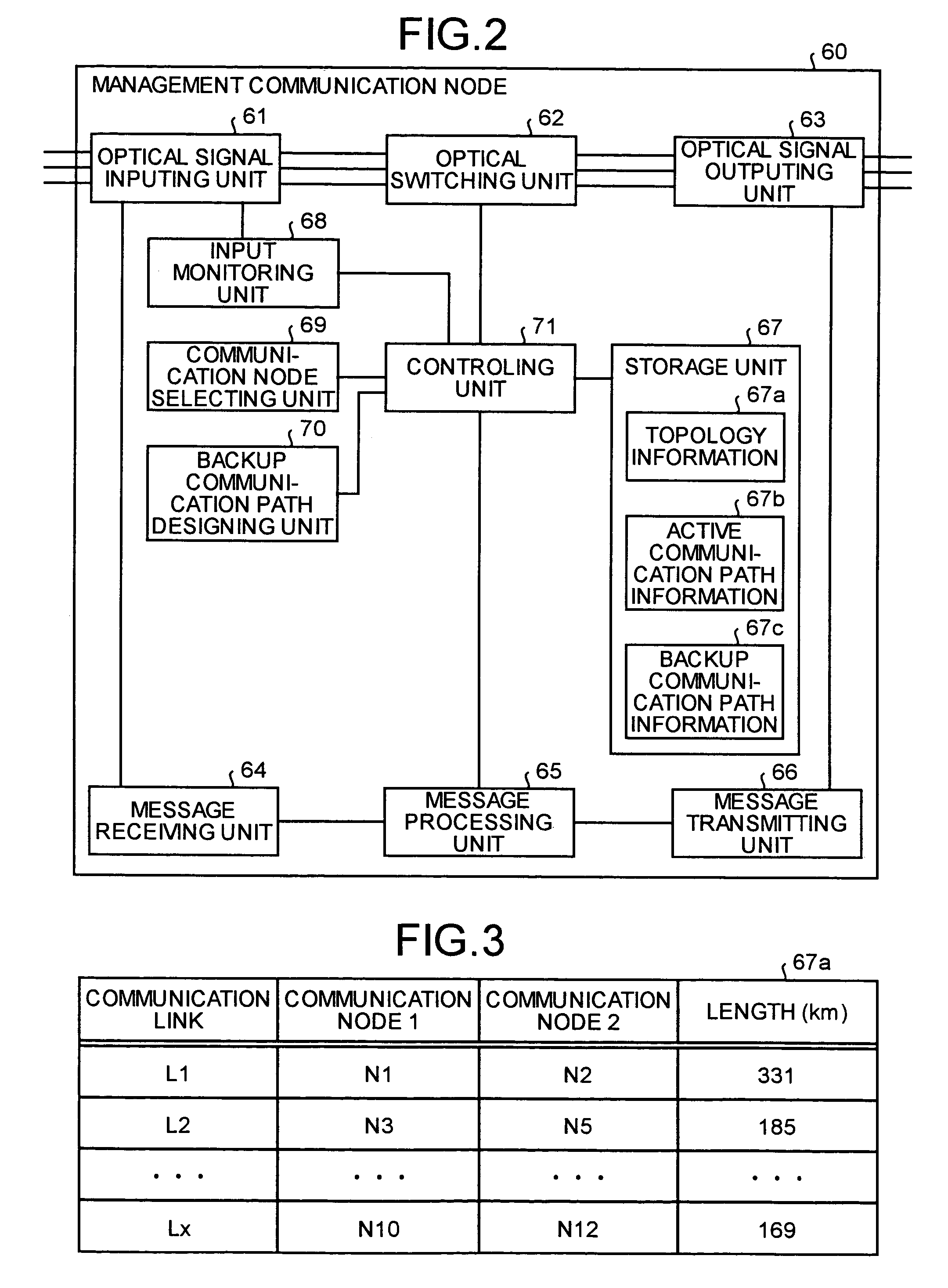Method and apparatus for designing backup communication path, and computer product
a communication path and backup technology, applied in the field of methods and apparatuses for designing backup communication paths, and computer products, can solve the problems of delay in communication path recovery, inability to realize fast service recovery, and increase in damage with the number of services
- Summary
- Abstract
- Description
- Claims
- Application Information
AI Technical Summary
Benefits of technology
Problems solved by technology
Method used
Image
Examples
first embodiment
[0058]FIG. 1 is a schematic to explain a backup communication path design processing according to the present invention. As explained in FIG. 1, in the backup communication path design processing, communication nodes 47 and 48 where a time for transferring a failure notification message from a plurality of failure detected communication nodes 42, 43, 44, and 45 which detect a plurality of failures on an active communication path 40 to be protected is within a predetermined time are selected, and the selected communication nodes 47 and 48 are used to search for a backup communication path common to each failure which bypasses the failures.
[0059]The failure means a failure in a communication link or in a communication node. When a failure occurs in the communication link, a communication node connected to the communication link transmits a failure notification message.
[0060]When a failure occurs in the communication node, the communication node where the failure has occurred transmits...
second embodiment
[0115]In the present invention, there will be explained a case where when a failure is detected in any one of communication nodes across the failure in the bidirectional communication, a backup communication path which recovers the communication within a predetermined recovery time is designed.
[0116]First, a backup communication path design processing according to the second embodiment will be explained. FIG. 7 is a schematic to explain a failure notification area to which a failure notification message is transferred from two adjacent communication nodes, and FIG. 8 is a schematic to explain the backup communication path design processing according to the second embodiment.
[0117]As explained in FIG. 7, a communication node group where the time for transferring a failure notification message from one of communication nodes 81 and 83 on an active communication path 80 that detects a failure 82 is within a predetermined time is first extracted in the backup communication path design p...
third embodiment
[0142]In the present invention, there will be explained a case where a bypass communication node is searched for that selects a communication node on the active communication path where the time for transferring a failure notification message from a failure detected communication node is within a predetermined time and assumes the selected communication node as the start communication node.
[0143]First, a backup communication path design processing according to the third embodiment will be explained. FIG. 11 is a schematic to explain the backup communication path design processing where switching is performed by flooding a failure notification message.
[0144]As explained in FIG. 11, in the backup communication path design processing, a communication node 141 where the time for transferring a failure notification message by flooding from a plurality of failure detected communication nodes 142, 143, and 144 that detect the failures on an active communication path 140 to be protected is ...
PUM
 Login to View More
Login to View More Abstract
Description
Claims
Application Information
 Login to View More
Login to View More - R&D
- Intellectual Property
- Life Sciences
- Materials
- Tech Scout
- Unparalleled Data Quality
- Higher Quality Content
- 60% Fewer Hallucinations
Browse by: Latest US Patents, China's latest patents, Technical Efficacy Thesaurus, Application Domain, Technology Topic, Popular Technical Reports.
© 2025 PatSnap. All rights reserved.Legal|Privacy policy|Modern Slavery Act Transparency Statement|Sitemap|About US| Contact US: help@patsnap.com



